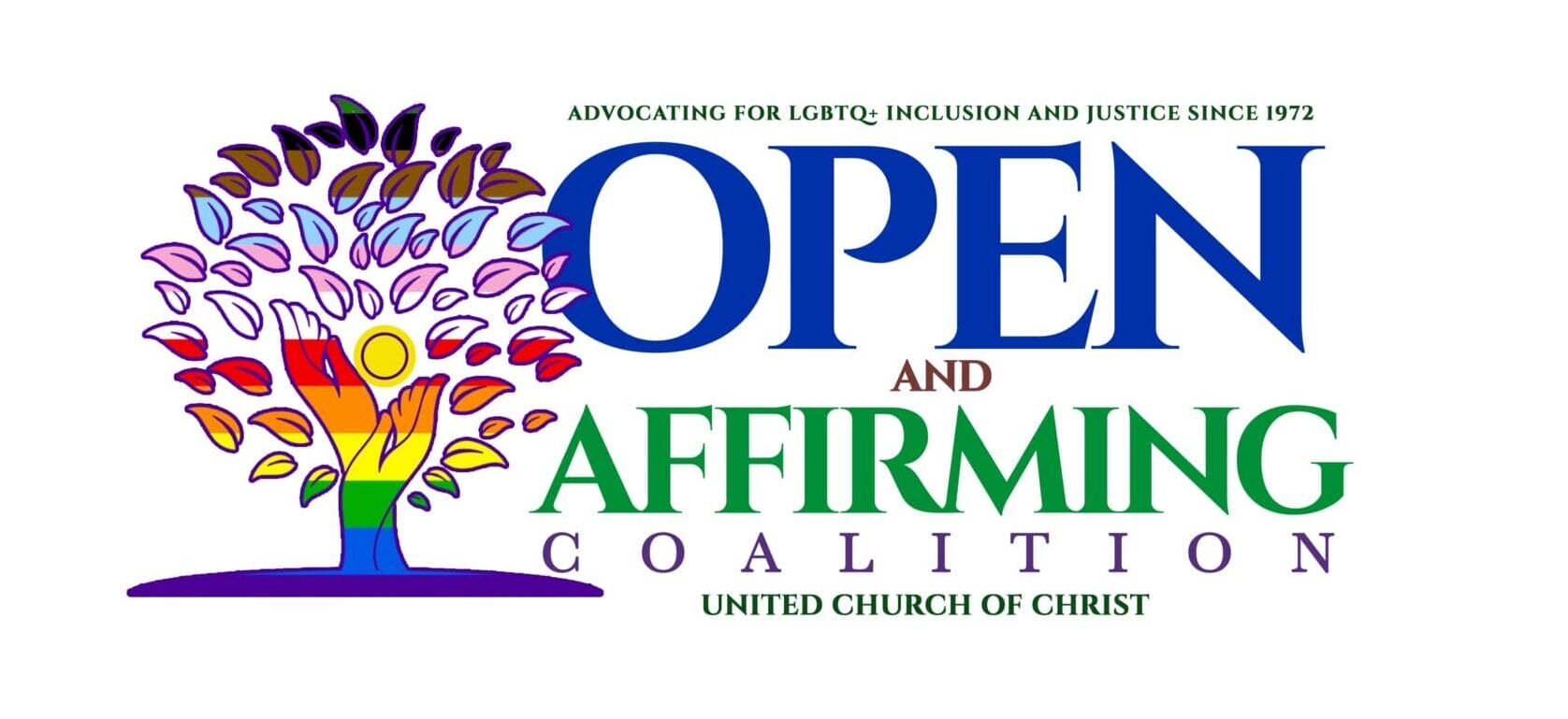Definitions
Breaking down the differences between bisexuality and pansexuality.
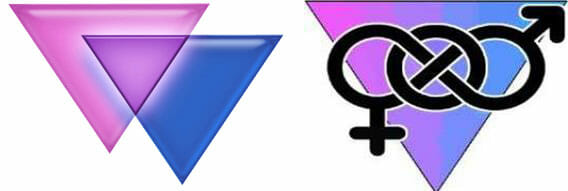
Bisexuality
Bisexuality is the potential to be attracted, romantically and/or sexually, to people of more than one gender, not necessarily at the same time, not necessarily in the same way, and not necessarily to the same degree.

Pansexuality
Pansexuality is sexual, romantic or emotional attraction towards people regardless of their sex or gender identity. Pansexual people may refer to themselves as gender-blind, asserting that gender and sex are not determining factors in their romantic or sexual attraction to others.
What is the difference between bisexuality and pansexuality?
(2020) by Sophie Saint Thomas and Carina Hsieh for Cosmopolitan. “Pansexuality and bisexuality are often used interchangeably with one another, they actually mean two different things, explains Tanya M. Bass, PhD, sexologist. While both describe sexual orientations, bisexuality is rooted in a binary system of gender identities, Bass explains. On the other hand, pansexuality encompasses attraction (either sexual, romantic, physical, and or spiritual) towards members of all gender identities and expressions and is not rooted in the binary.”
Myths about bisexuality
From Marie Alford-Harkey and Debra Haffner’s Bisexuality: Making the Invisible Visible in Faith Communities.
Only [young people/white people/insert-identifier-here] are bisexual.
Fact: Bisexual people exist in all cultures, age groups, racial and ethnic groups, and gender identities.
If a bisexual person marries a person of the opposite sex, they are no longer bisexual.
Fact: One’s sexual orientation doesn’t change just become one is in a relationship. There are people in long-term, committed, monogamous relationships with someone of the opposite sex who continue to identify as bisexual. The converse is true for bisexual people in same-sex relationships.
If a person has never had sex with a person of the opposite gender, they are not “real” bisexuals.
Fact: Sexual orientation is not dependent upon the act of sex. A bisexual person can fall in love with a single person, commit to that person, and stay committed for the remainder of their life, and they can still be bisexual. Just like a gay person knows they are gay before having sex and a heterosexual person knows their identity before engaging in the sex act, bisexual people can be bisexual and remain celibate or in monogamous relationships for the remainder of their lives and still be bisexual.
Bisexual people are more promiscuous than heterosexual or homosexual people and incapable of being monogamous.
Fact: Bisexual people are just as likely to be faithful to their commitments as non-bisexual people. According to Dr. Lisa Diamond, “In reality, a great many bisexual individuals have happily monogamous relationships with their partners.” For example – A recent study concluded that at the end of ten-years, 89% of women who identify as bisexual were still in monogamous, long-term relationships.
Gay and lesbian people are totally accepting of bisexuality. It’s only heterosexual people who have a problem with it.
Fact: Bisexual people can be discriminated against by heterosexual, lesbian, and gay people. Some gay and lesbian organizations ignore the needs or even the existence of bisexual people or reinforce the myth that bisexual people are just gay or lesbian, but afraid to come out.
Facts about Bisexuality
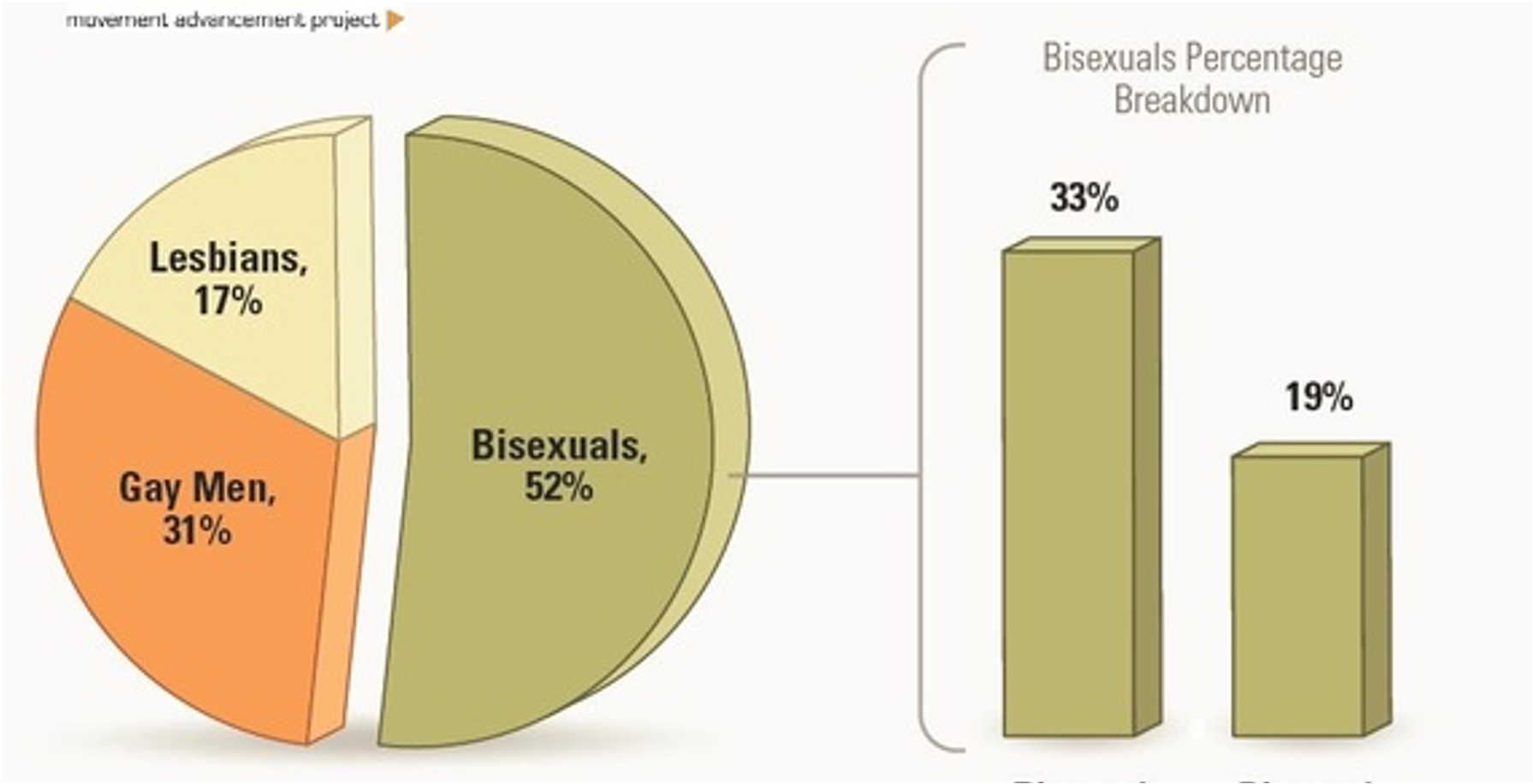
In the United States, 9 million people currently identify as part of of the LGBTQIA+ community. That means that LGBTQIA+ people outnumber the total populations of the 40 lowest population states.
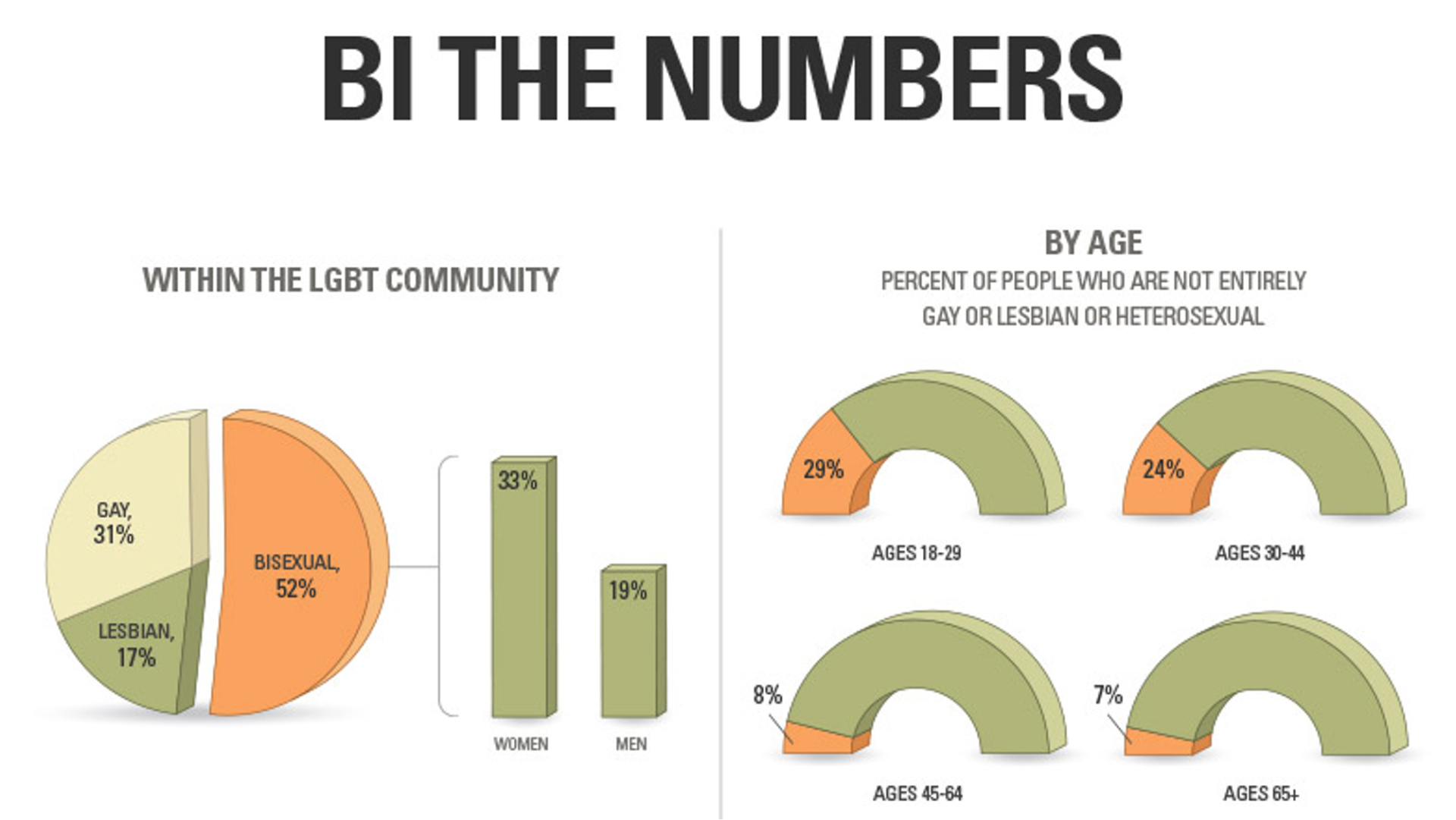
Many studies estimate that because of other factors, that number might be minimized as much as 50% – meaning there are actually at least 18 million people who identify as LGBTQIA+ people in the United states today.
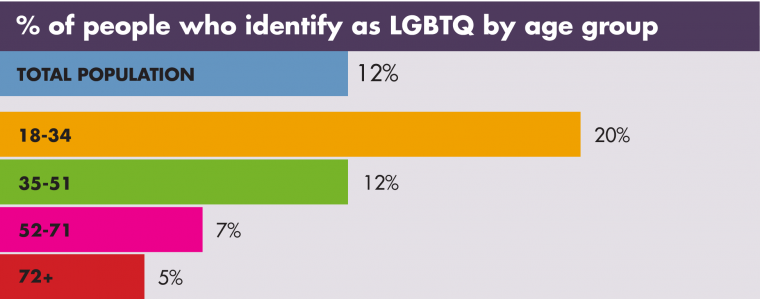
Millennials and post-millennials are more likely to identify outside of a binary – as bisexual, rather than lesbian or gay.
from GLAAD
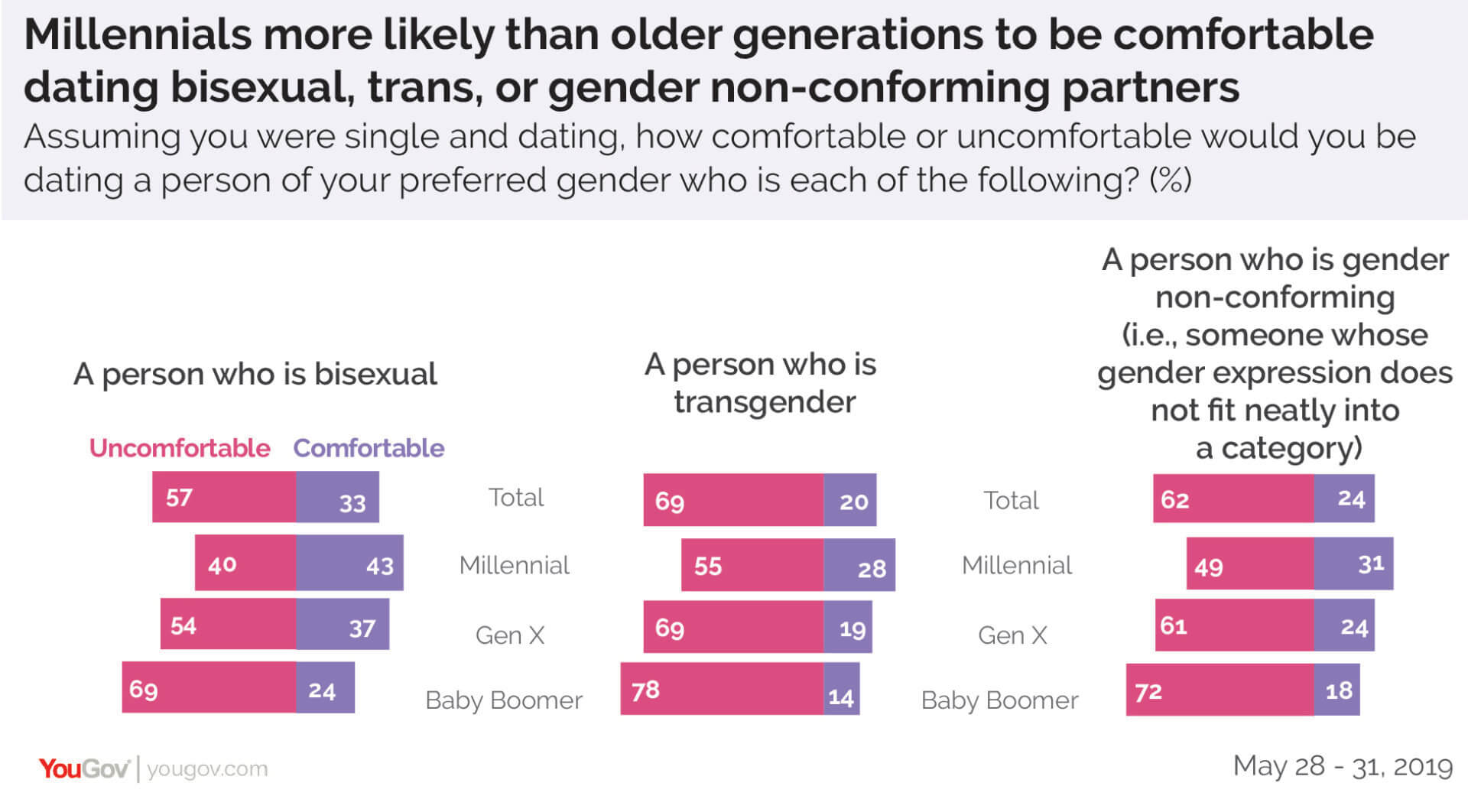
Millenials people are also more comfortable dating other bisexual people, transgender, or nonbinary people.
from YouGov
Biphobia
Biphobia is defined as the fear or hatred of bisexual people, often manifesting in discrimination, isolation, harassment, or violence. Bisexual people are often associated with infidelity, promiscuity, and the transmission of sexually transmitted diseases.
“Biphobia is almost as common among gay and lesbian people as it is among heterosexual people.”
– Marie Alford-Harkey and Debra Haffner
Queer Theology.
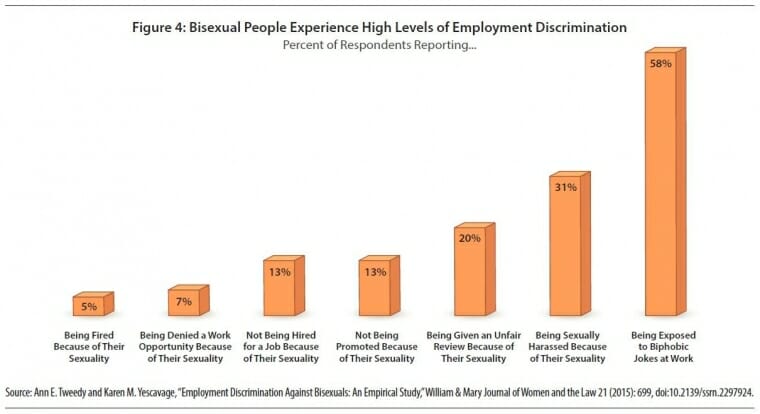
58% of bisexuals are exposed to biphobic jokes at work, and 31% have been sexually harassed on the job because of who they are. Many have even been denied job advancement or work opportunities because they are bisexual.
from GLAAD
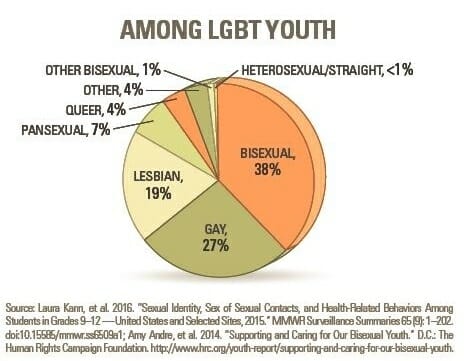
More than half of LGBT youth are bi+, including 7% who are pansexual and 4% who are queer. 40% of bi high school students seriously considered attempting suicide.
Bi-erasure
Biphobia can be accompanied by bi-erasure, which is defined as the belief that being bisexual is a phase on the way to coming out as gay or lesbian; or that bisexuality is a phase while people (especially women) are younger, and that as people grow older they find opposite gender partners and stop identifying as bisexual. While those things do occasionally occur, the times when they do are exceptions – not the rule. Research going back decades demonstrates that bisexuality is “an enduring and distinct sexual orientation.”
Additional videos
(2018)
(2019)
(2018)
Resources
Please use the resources in this section to learn more.
- Bisexuality: Making Visible the Invisible in Faith Communities is the first congregational guidebook ever written on bisexuality. A multifaith compendium of stories and congregational resources, Bisexuality helps faith communities minister to bisexual people and their families.
- Bisexuality and health: The cost of invisibility (2019) by Sabra L. Katz-Wise for Harvard Health “Experts in the field of bisexual health research believe minority stress negatively affects health outcomes. Minority stress refers to experiences of prejudice or discrimination based on stigma that lead to poor health. Bi+ people experience unique minority stress related to being bisexual, such as negative stereotypes about what it means to be bisexual (bisexuality is a phase, bisexual women are promiscuous, bisexual men are vectors of HIV). Feeling invisible may also create problems. These unique forms of minority stress can be harmful for bi+ people’s health.”
- The evolution of the word ‘bisexual’ — and why it’s still misunderstood (2020) by Alex Berg for NBC News. “The pervasive stereotype that bisexuality is an exclusive and limiting label is something bi activists have been fighting for decades.”
